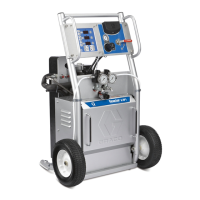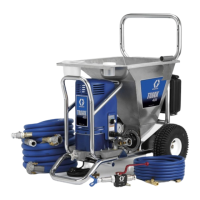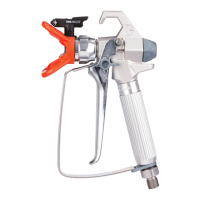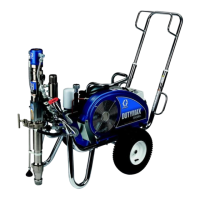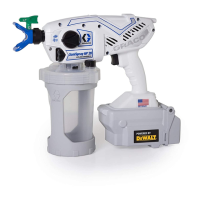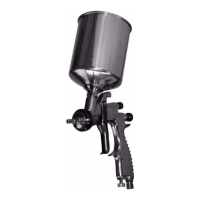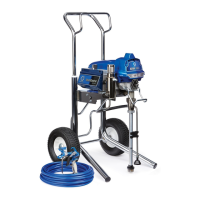308–626
5
WARNING
FIRE AND EXPLOSION HAZARD
Improper
grounding, poor air ventilation, open flames, or sparks can cause a hazardous condition and
result in fire or explosion and serious injury
.
D
Ground the equipment and the object being sprayed. See
Electrical Grounding
on page 6.
D
Provide fresh air ventilation to avoid the buildup of flammable fumes from solvent or the fluid being
sprayed.
D
Extinguish all the open flames or pilot lights in the spray area.
D
Electrically disconnect all the equipment in the spray area.
D
Keep the spray area free of debris, including solvent, rags, and gasoline.
D
Do not turn on or of
f any light switch in the spray area while operating or if fumes are present.
D
Do not smoke in the spray area.
D
Do not operate a gasoline engine in the spray area.
D
If there is any static sparking while using the equipment,
stop spraying immediately
. Identify and
correct the problem.
INSTRUCTIONS
EQUIPMENT MISUSE HAZARD
Equipment
misuse can cause the equipment to rupture, malfunction, or start unexpectedly and result
in serious injury
.
D
This equipment is for professional use only
.
D
Read all instruction manuals, tags, and labels before operating the equipment.
D
Use the equipment only for its intended purpose. If you are uncertain about the usage, call your
distributor.
D
Do not alter or modify this equipment. Use only genuine Graco parts and accessories.
D
Check the equipment daily
. Repair or replace worn or damaged parts immediately
.
D
Do not exceed the maximum working pressure of the lowest rated system component. This equip
-
ment has a
3000 psi (207 bar) maximum working pressure.
D
Route the hoses away from the traffic areas, sharp edges, moving parts, and hot surfaces. Do not
expose Graco hoses to temperatures above 160
_F (65_
C) or below –40
_F (–40_C).
D
Do not use the hoses to pull the equipment.
D
Use fluids or solvents that are compatible with the equipment wetted parts. See the
Technical
Data
section of all the equipment manuals. Read the fluid and solvent manufacturer
’
s warnings.
D
Fluid hoses must have spring guards on both ends to protect them from rupture caused by kinks or
bends near the couplings.
D
Comply with all applicable local, state and national fire, electrical and other safety regulations.
D Wear hearing protection when operating this equipment.
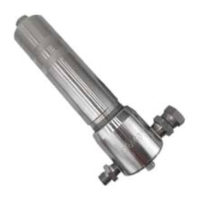
